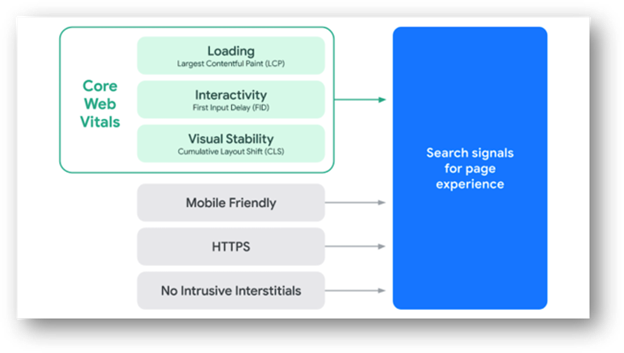January 24 2022
2021 Google Updates in Review
2021 brought several changes to the way Google determines how a page ranks. Some changes had a ripple effect, starting off small and spreading far and wide. Others were more dramatic and will continue to have an impact throughout 2022 and beyond.
Passage Ranking Update (February)
Before: Imagine you are looking for something highly specific. You enter your query into Google and the results appear. But it’s unclear how or why that page might be relevant to your interests. You aren’t sure what results to click on to get the information you need.
Now: When you enter a search query in Google, the passage on the page that contains that query is more likely to show up in the search results and even in the featured snippets on the page.
About This Result (July)
As we discussed in this blog from July 2021, Google is now providing insight into how and why they choose to rank a page the way they do. You can now click on the three dots next to a page listed in the search results and a box will pop up, explaining more about why this page showed up for your query.
Mobile-First Indexing Update (March)
Mobile-first indexing was first announced in 2016. Over the years, it’s gone through several variations, but in 2021, it was announced that mobile-first indexing would be applied to ALL website pages.
Product Reviews (April and December)
For websites that depend on reviews, this update could have a big impact. Google is now putting a higher priority on well-thought-out reviews that provide the user with original information and more details than what is found on the manufacturer site. This includes those that have images associated with them.
For example, this customer recently added product review schema markup to their site. In the past month, we have seen an increase in clicks, impressions, and click-thru rates. This is especially impressive given that this took place during the holiday months.
MUM Update (February)
Described as being even more powerful than the BERT update in 2019, this update is about how Google understands the user’s query in relation to other terms they might be using. We discuss this in detail in our blog on Understanding Semantic Search with the B-SMART Method from earlier this year.
Link Spam (June and July)
Though small in the scheme of things, this update is part of Google’s attempts to minimize unhelpful links, pages, and images from appearing in the search landscape. These were part of the June/July updates we discussed here.
Page Experience (June through September)
The biggest update of the year, this refers to the Core Web Vitals we have been discussing in the last half of 2021.
The Core Web Vitals are the new set of signals Google will be using to help determine rankings. The signals are all a part of making the search experience better for users. We discussed these new metrics in detail in a four-part series:
- In Part One of our series, we identified and explained what these new signals mean.
- In Part Two, we got into more detail about what the Core Web Vitals mean in the overall picture.
- Part Three talks about how to interpret the data from the Core Web Vitals.
- And Part Four answers additional questions you might have about these ranking signals.
Page Titles (August)
Google announced that they were introducing a new way to provide clearer web page titles. As Danny Sullivan from Google puts it: “Overall, our update is designed to produce more readable and accessible titles for pages. In some cases, we may add site names where that is seen as helpful. In other instances, when encountering an extremely long title, we might select the most relevant portion rather than starting at the beginning and truncating more useful parts.” Though this doesn’t change much on the back end, it should also improve the user search experience.





